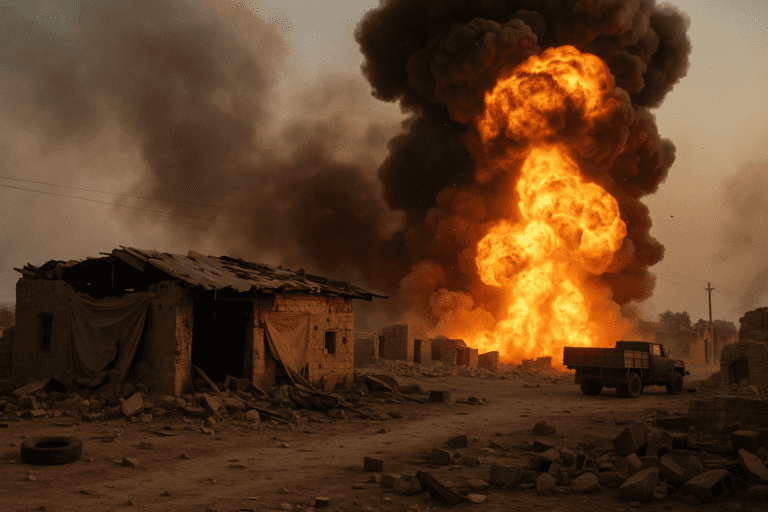In response to a deadly drone attack on a U.S. military base in Jordan, the United States launched a significant military operation on February 2, 2024, targeting 85 facilities linked to Iran-backed militia groups across Iraq and Syria. The coordinated airstrikes, executed by B-1B bombers, focused on key infrastructure including command centers, missile storage sites, and logistics hubs used by these militias.
Justification and Military Impact
The U.S. government described the strikes as a necessary defensive measure aimed at protecting American personnel and assets in the volatile Middle East region. This decisive action came after the drone assault claimed the lives of several U.S. service members, signaling Washington’s resolve to deter future attacks.
Military officials reported that the strikes destroyed more than 80 targets and inflicted heavy casualties on the militia forces. At least 35 militants were confirmed killed in Syria and 16 in Iraq. The degradation of critical military infrastructure is expected to significantly reduce the operational capabilities of these Iran-aligned groups.
Regional Backlash and Sovereignty Concerns
Despite the tactical success, the airstrikes provoked sharp condemnation from the governments of Iraq and Syria, who denounced the attacks as violations of their sovereignty. Iraq, particularly aggrieved, criticized the strikes for targeting territory within its borders without consent, heightening tensions between Baghdad and Washington. This incident threatens to intensify Iraq’s longstanding demands for the withdrawal of foreign troops.
Iran also issued a strong rebuke, condemning the U.S. operation as a “strategic error” and warning of possible retaliation. Tehran’s support for militias in Iraq and Syria is a cornerstone of its regional strategy, and the strikes threaten to escalate the proxy conflicts that define the Middle East’s geopolitical landscape.
Broader Regional and Global Implications
The airstrikes add complexity to an already fragile balance in the Middle East. Relations between the U.S. and Iraq remain strained, and growing opposition within Iraq to the continued presence of American forces could undermine U.S. influence and efforts to counter Iranian-backed groups.
The operation also raised fears of further escalation in a region plagued by persistent conflict and instability. Analysts caution that renewed military confrontations could exacerbate humanitarian crises and complicate diplomatic efforts aimed at regional peace and stability.
Looking Ahead: Navigating a Tense Landscape
As diplomatic and military responses unfold, the international community watches anxiously for signs of escalation or de-escalation. While the U.S. insists the airstrikes were essential for self-defense, the vehement reactions from Iraq, Syria, and Iran highlight the precariousness of the current situation.
Navigating this volatile web of alliances and rivalries remains a formidable challenge for policymakers. The coming weeks will be critical in determining whether further retaliation occurs or if diplomatic channels can be leveraged to reduce tensions and prevent wider conflict.
The episode underscores the delicate balance of military action and diplomacy in a region where conflicts are deeply intertwined with broader geopolitical rivalries. The situation remains dynamic, with consequences that will shape the Middle East’s security landscape for the foreseeable future.


